Hair Transplant in Chiang Mai
Search and Compare the Best Clinics and Doctors at the Lowest Prices for Hair Transplant in Chiang Mai
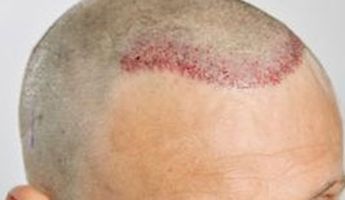
Find the best clinics for Hair Transplant in Chiang Mai
With Medijump you can browse 1 facilities offering Hair Transplant procedures in Chiang Mai. The cheapest price available is $1,945 in Bangkok. And for the cheapest price globally, prices start from in .
Hair Transplant in Thailand
Price: $ 1,945
Hair Transplant in Bangkok
Price: $ 1,945
Hair Transplant in Khon Kaen
Price: $ 2,223
From 1 verified reviews
Zhisheng Fung, 22 March 2024
Great service. The doctor is skilled and careful. My wound healed quickly. The staff are friendly. Thanks to the whole team!
Compare Before & After Photos of _procedure_photos.phpHair Transplant
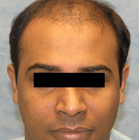
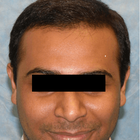
Front view
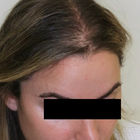
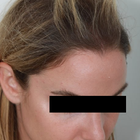
Half-side view
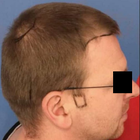
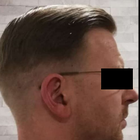
Full-side view
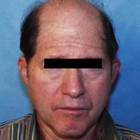
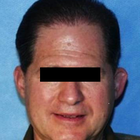
Front view
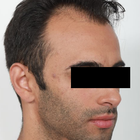
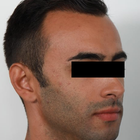
Half-side view
WHY US?
At Medijump, we're making medical easy. You can search, compare, discuss, and book your medical all in one place. We open the door to the best medical providers worldwide, saving you time and energy along the way, and it's all for FREE, no hidden fees, and no price markups guaranteed. So what are you waiting for?

Free

Best Price

Widest Selection

Risk-Free
What you need to know about Hair Transplant in Chiang Mai

Hair Transplantation, also known as hair restoration surgery, is the surgical process of moving hair follicles from one part of the body that is rich in hair (known as a donor site) and embedding them at the the bald area of the head (recipient site). The medical course of action that aims at addressing hair loss issues and improving aesthetics. While there are many causes of hair loss, the most common reason, especially for men, is genetics. Hereditary hair loss as men age is the number one leading factor of baldness.
It is a minimally invasive procedure, performed under local anesthetic and is most commonly used to treat male baldness, but the technique can also be used to restore eyelashes, eyebrows, beard hair and to fill in scars. The procedure usually lasts between 4 to 8 hours, depending on the number of grafts needed. This procedure is a long-term solution to hair loss, with most patients experiencing significant improvement in hair growth after six months to a year.
Why do people experience hair loss?
We lose an average of 100 hairs a day, however, these hairs are immediately replaced by new hairs growing at the same time. Hair loss can occur suddenly or gradually and it may affect your scalp or your entire body, depending on what’s causing it. Other causes of hair loss may include:
- Stress - a lot of people may experience hair thinning for several months due to a physical or emotional shock. However, this type of hair loss is only temporary.
- Certain Hairstyles and treatments - hairstyles that pull your hair like tight pigtails, ponytails or braids can actually cause traction alopecia. Permanent hair treatments and hot oil treatment may also lead to hair loss; these hair treatments cause inflammation to the hair follicles. If there is scarring, hair loss may be permanent.
- Radiation Therapy - for example, during cancer treatment.
- Certain medical conditions and hormonal changes - in women, hormonal changes due to pregnancy, childbirth menopause or thyroid problems may cause temporary or permanent hair loss. As for medical conditions, hair loss may be due to alopecia, scalp infections like ringworm or a hair-pulling disorder known as trichotillomania.
Sudden hair loss may also be a sign of a specific medical condition that will require treatment. You will need to consult your doctor if you experience more than your usual hair loss whenever you are combing or washing your hair and also if you encounter a sudden patchy loss of hair.
A hair transplant is a common treatment performed on people who are experiencing baldness due to aging and heredity factors. However, if you are completely bald with absolutely no hair left, then this type of treatment may not be applicable for you, as you won't have sufficient donor hair to supply.
What is the cost of Hair Transplant in Chiang Mai?
The cost of Hair Transplant in Chiang Mai is typically influenced by various factors. These may include the experience and reputation of the surgeon, the complexity of your case, and the total number of grafts needed. Moreover, the pricing strategy followed by the medical establishment also plays a significant role. Some clinics charge based on the number of grafts transplanted, while others might price the procedure as a package. The exact price can therefore only be determined in consultation with a trusted clinic. While it can appear costly to some, the Hair Transplant is an investment in one's appearance and self-confidence.
What Does The Procedure Involve?
The hair transplant procedure involves taking hair from your Donor Site and transferring it to the area(s) lacking in hair, the Recipient Site, and a local anesthetic will be applied before the procedure begins to limit any discomfort.
There are two main methods used in a hair transplant procedure:
- Follicular Unit Transplantation (FUT) - strips of tissue will be removed from your donor area, these strips will be cut into individual follicular units. Small cuts will be made on your scalp where the follicular unit grafts will be placed. This method is becoming less popular.
- Follicular Unit Extraction (FUE) - individual hair follicles will be directly extracted from your donor area and moved to your recipient site using a specialist microsurgical needle. FUE is now the preferred technique for hair transplants as it will not leave a linear scar at the back of the head.
Procedures are undertaken by a fully qualified technician and usually involve the extraction of around 3,000 grafts, going up to 4,000. Any more, and it will likely require two separate sittings to complete.
How Long Should I Stay in Chiang Mai for a Hair Transplant Procedure?
Hair transplants are usually performed as an outpatient procedure. Thus, you will be able to go back to your hotel immediately after. Both methods used for Hair Transplant treatments usually take 4-8 hours to complete. With FUE technique, there are no stitches or staples to be removed, so you won't need to stay in Chiang Mai for long after the procedure, just allow a day or two to be sure before traveling home.
You should expect to pay the clinic another visit the day after the treatment so the doctor can remove the bandage, examine the areas of intake and transplantation of follicles, before washing your hair using a special technique that you will learn to perform by yourself. Finally, the doctor will provide you with a special shampoo that will help to restore the skin.
What's the Recovery Time for Hair Transplant Procedures in Chiang Mai?
Your scalp will continue to be sensitive to pain for a few days, during which time you should continue to take the medications provided by the doctor. On top of the pain killers and anti-inflammatory meds, you may also be given antibiotics to lessen the risk of infection, as uncommon as this may be.
You should expect to return to work and your daily routine, including exercise, after 5 days. However, the signs of a hair transplant will remain for at least another 2-3 weeks, at which point the newly transplanted hairs will start to fall out - but don't be alarmed! This is to be expected as you've just had a follicle extraction, so dead hair will simply make way for new hair over the coming weeks and months.
If the average person's hair only grows at a centimeter per month, then it will take some time before you can wear your hair long again. You could expect to display short and consistent hair just 4-6 weeks after the treatment.
What sort of Aftercare is Required for Hair Transplant Procedures in Chiang Mai?
After the procedure is complete, anti-swelling medication and painkillers will be available and you'll be provided with various essentials to see you through the days immediately following. Post-op items may include; specialist shampoo, lotion, multivitamins, a special hat, a headband, neck pillow, and wound dressing.
Having already been provided with your post-op aftercare products, you may also be offered Platelet Rich Plasma (PRP) Therapy to help stimulate the hair follicles and encourage hair growth. This is where a small amount of blood is taken, rich in plasma, which is then injected into the Recipient Site.
What's the Success Rate of Hair Transplant Procedures in Chiang Mai?
The success rate for hair transplants is one of the highest, at 98% and is considered the only truly effective remedy for hair loss.
The effectiveness of Hair Transplant treatments is significantly shaped by the surgeon's expertise who executes the process. A seasoned and competent surgeon employs sophisticated methods to prevent harm to the transplanted hair follicles during the process, which leads to a higher likelihood of success. Additionally, the ability of the surgeon to place the grafts in an attractive manner that resembles natural hair growth further enhances the perceived successfulness of the result.
Beyond the competency of the surgeon, the overall health status and lifestyle choices of the patient greatly impact the treatment's effectiveness. Subpar habits such as excessive smoking and alcohol intake can obstruct the recovery process and influence the result adversely. Illnesses like diabetes can also interfere with the likelihood of success.
Consideration of the donor hair's quality is another aspect that may affect the success of the procedure. Generally, those with robust, plentiful hair in the donor region have a higher success rate as compared to individuals with sparse or poor-quality hair. The availability of more follicles for transplantation yields better results. A detailed examination is carried out before the Hair Transplant to verify the quantity and quality of the donor's hair.
Are there Alternatives to a Hair Transplant?
Laser therapy is one alternative to a hair transplant. During this procedure, a low-level laser device will be used as a treatment for a hair loss specifically caused by genetics. This low-level laser with a wavelength of 650 nanometres can actually stimulate your hair growth. However, long term effects for this type of alternative still remains uncertain.
PRP Therapy is another alternative you can consider. This type of treatment will make use of your own blood to promote hair growth. Your blood will be spun in a centrifuge to separate your blood’s plasma component from your red and white blood cells. Plasma contains many growth factors that promote hair growth when injected into the scalp.
Other non-surgical alternatives could include simply shaving all your hair off, trying other hairstyles or using a wig or hairpiece.
How do FUT and FUE Compare?
The two most common techniques used are the Follicular Unit Transplant (FUT) and the Follicular Unit Extraction (FUE). How do they compare?
1. FUT, also referred to as FUSS (Follicular Unit Strip Surgery), involves the removal of a strip of skin from the back of the head containing lots of hair follicles, which is stitched up and hidden by the surrounding hair. Then the strip of follicles is divided into 500-2,000 tiny grafts containing just a few hairs. These are then embedded across the bald area of the head.
2. FUE does not require a strip of skin to be removed, instead, the hair follicles are individually removed from the donor site and positioned across the bald area in tiny slits created by a scalpel or needle.
What are the Risks Associated with Hair Transplant?
Like any surgical procedure, Hair Transplant carries certain risks, although they are relatively rare and usually minor if performed by a skilled and experienced surgeon.
Some potential risks and side effects could include:
- Scarring is the most common side effect (only applicable to FUT)
- Infections
- Temporary loss of sensation around the surgical sites
- Inflammation of hair follicles (folliculitis)
- Temporary scalp pain, itching, and swelling.
- Unnatural-looking hair growth
Whilst the information presented here has been accurately sourced and verified by a medical professional for its accuracy, it is still advised to consult with your doctor before pursuing a medical treatment at one of the listed medical providers
No Time?
Tell us what you're looking for and we'll reachout to the top clinics all at once
Enquire Now

Popular Procedures in Chiang Mai
Prices Start From $153

Prices Start From $500

Price on Request

Prices Start From $500

Recommended Medical Centers in Chiang Mai for Hair Transplant

- Interpreter services
- Translation service
- Religious facilities
- Medical records transfer
- Medical travel insurance
- Health insurance coordination
- TV in the room
- Safe in the room
- Phone in the room
- Private rooms for patients available

- Interpreter services
- Translation service
- Religious facilities
- Medical records transfer
- Medical travel insurance
- Health insurance coordination
- TV in the room
- Safe in the room
- Phone in the room
- Private rooms for patients available

- Interpreter services
- Translation service
- Religious facilities
- Medical records transfer
- Medical travel insurance
- Health insurance coordination
- TV in the room
- Safe in the room
- Phone in the room
- Private rooms for patients available
Hair Transplant in and around Chiang Mai
About Chiang Mai
Chiang Mai is the fourth largest city in Thailand and is situated in the Northern part of the country. Chiang Mai is a land of misty mountains, hillside tribal villages and lush green landscape. Chiang Mai is not only an amazing holiday location but is also one of the most reliable and affordable destinations for medical tourism. Surprisingly, medical costs are cheaper here than in Bangkok and the facilities are up to date and for 3000 baht (approximately $100), you can have a complete health check-up.
Each year, thousands of medical tourists from all over the globe flock to Chiang Mai. The city's superior hospitals that are top-rated globally, boast dedicated International departments specifically put in place to meet the varying needs of these medical visitors. Impeccable hospitality services are a hallmark of these facilities, coupled with hospital personnel and medical professionals who are proficient in English.
These hospitals are equipped to provide wide-ranging treatments such as cardiac surgery, amongst others, and cosmetic procedures including but not limited to breast augmentations, liposuction, and cool sculpting. There are also quite attractive medical packages available that conveniently bundle treatment and accommodation.
The Chiang Mai Ram International, bearing a notable reputation for their remarkable services, stands out as the most frequented hospital in the city. Moreover, Chiang Mai is rich with numerous restorative amenities including spas, resorts as well as massage and healing centers. These outlets have cemented the city’s status as a perfect haven for post-treatment rejuvenation.
Popular areas in Chiang Mai
The metropolitan area of Chiang Mai is home to over 1 million residents. Listed below are the popular areas of this amazing city. Each area has its own charm and offers something to the visitors.
- Old City: Is the cultural and religious epicenter of Chiang Mai. The old town has moats and fortress walls from ancient times. Pae gate, which lies in the Old Town, is the most famous traditional landmark of the city.
- Nimmanhemin road: You can experience a bustling and vibrant nightlife here. Located close to the famous Chiang Mai University, this place is quite popular with the young and dynamic student population and you can find several affordable hostels and guesthouses on the Nimmanhemin road, varied housing options are available for long-term expats.
- Chiang Mai Night Bazaar: Considered as the ‘downtown’ of Chiang Mai, it is a paradise for shopping sprees. You will find a lot of street food shops which offer authentic Thai delicacies at affordable prices. Handicrafts, antiques, textiles and other traditional Thai products also come with affordable price tags. After 6 pm, this area comes alive and you can expect to see the streets very busy with enthusiastic tourists and locals.
- Riverside: The Riverside Chiang Mai has all of the old world charms that the city is renowned for with affordable eateries and live-music venues combined with the fresh river breeze and the relaxed atmosphere all helps to make it the best place to chill out during evening time.
- Santitham: The Santitham area of the city is mainly populated by Thai locals and this spot is less touristy and a bit more laid back. You can find supermarkets, public parks, and many residential buildings within this neighborhood.
Weather and climate in Chiang Mai
Located at an elevation of 316 meters, Chiang Mai enjoys a cooler and pleasant climate. As it experiences a typical tropical climate, winter, and spring seasons are not applicable. Instead, Hot, Cool and Rainy seasons are distinct in Chiang Mai.
- Cool: Early December to February. Day time temperature rises up to 30°C, yet, you may require sweatshirts to keep yourself warm as dusk approaches. It is the best weather to pay a visit to Chiang Mai. January is the coolest month of the season with temperatures dropping to as low as 10°C.
- Hot: Mid-February to mid-June. March is the hottest month in Chiang Mai with the temperatures rising to 40°C. You can escape the blistering heat waves and embrace the chilly breeze by visiting the nearby mountains.
- Rainy: Early June to late October. The average temperature drops down to 32°C during the rainy season. It rains almost every single day without fail. Even though the rainfall is heavy and the storms are intense, they won’t last for long. August is the wettest month of the year.
Getting around in Chiang Mai
Chiang Mai International Airport proclaims its status as the fourth busiest air hub in the country. It skillfully and efficiently manages a substantial volume of domestic and international flights. These flights provide vital connections between Chiang Mai and an array of prominent cities across the globe such as Bangkok, Beijing, Doha, and Ho Chi Minh, to mention a few.
While Chiang Mai, the bustling metropolis, boasts a sizeable expanse and a cosmopolitan vibe, its public transportation system falls somewhat short of organized. However, this minor shortcoming does not pose a barrier to exploration of this magnificent city. A plethora of other transportation mediums step in to bridge this gap, facilitating comfortable and convenient travel around the city. These constitute both traditional and modern modes of transport that cater to different tastes and preferences, all aimed at ensuring visitors and locals alike can fully experience and appreciate the city's remarkable offerings.
- Songthaew: The Songthaew or red truck is the most common and the desirable mode of transportation. For 30 Bahts, you can travel anywhere within the city, as long as you have no issues sharing your ride with other passengers. You can book private songthaew using the mobile app, GRAB.
- Tuk-tuks: Are the second most common mode of transportation next to songthaew. However, they are pricey as the rates start at 60 Bahts. It could be inexpensive too if you have exceptional bargaining skills.
- Taxis: Are quite expensive, costing somewhere between 100 and 200 Bahts per ride in the city.
Tourist visas in Chiang Mai
Thailand is a popular tourist destination for people from all over the world. Citizens of many countries, including the US, UK, Australia, Germany, and Singapore, do not need a visa to enter Thailand and can stay for up to 30 days without a visa.
Citizens of India and China who intend to stay in Thailand for up to 15 days can apply for a visa on arrival. However, if they want to stay for longer than 15 days, they will need to apply for a different type of visa, such as a transit visa or a non-immigrant visa.
Here is a summary of the visa requirements for Indian and Chinese passport holders:
- Visa on arrival: Indian and Chinese passport holders can apply for a visa on arrival if they intend to stay in Thailand for up to 15 days. The visa fee is 2,000 Thai baht.
- Transit visa: Indian and Chinese passport holders who are only passing through Thailand on their way to another country will need to apply for a transit visa. The transit visa allows them to stay in Thailand for up to 48 hours.
- Non-immigrant visa: Indian and Chinese passport holders who want to stay in Thailand for longer than 15 days will need to apply for a non-immigrant visa. There are different types of non-immigrant visas available, depending on the purpose of the visit.
To apply for a visa on arrival or a non-immigrant visa, Indian and Chinese passport holders will need to have a valid passport, a return flight ticket, and proof of funds. They may also need to provide additional documents, such as a hotel reservation or a letter of invitation from a Thai resident.
Additional Information
- Thai Baht is the currency of Thailand. 1 USD is around 34.5559 THB as of 2023.
- ATMs and exchange bureau are present at most of the tourist locations, making the withdrawal of local currency easy. You can pay by credit card in big restaurants, shopping malls, and hospitals.
- Thai is the official language of Thailand and is widely spoken in Chiang Mai. However, most of the locals in Chiang Mai do understand and speak good English. The street signs are also translated into English making it is easier for the tourists to get around.
- 90% of the total population of Thailand practice Buddhism, followed by Islam. Thai nationals exhibit deep love and admiration for their royal family.
- Notable public holidays:
- January 1 – New Year's Eve
- February 19 – Makha Bucha day
- April 12-16 – Songkran Festival
- May 5 – Coronation day
- December 10 – Constitution day
Popular Searches
- Plastic Surgery in Thailand
- Dental Implants in Thailand
- Hair Transplant in Thailand
- Breast Augmentation Thailand
- Gastric Sleeve in Thailand
- Gender Reassignment Surgery in Thailand
- Laser Hair Removal in Bangkok
- Botox in Bangkok
- Dermatology in Bangkok
- Breast Augmentation in Bangkok
- Coolsculpting in Bangkok
- Veneers in Turkey
- Hair Transplant in Turkey
- Rhinoplasty in Turkey
- Stem Cell Therapy in Mexico
- Rhinoplasty in Mexico
- Liposuction in Mexico
- Coolsculpting in Tijuana
- Rhinoplasty in Korea
- Scar Removal in Korea
- Gastric Sleeve in Turkey
- Bone Marrow Transplant in India
- Invisalign in Malaysia
- Plastic Surgery in the Dominican Republic
- Tummy Tuck in the Dominican Republic
- Plastic and Cosmetic Surgery in Poland
- Rhinoplasty in Poland
- Hair Implant in Poland
- Dental Implants in Poland
- IVF in Turkey
